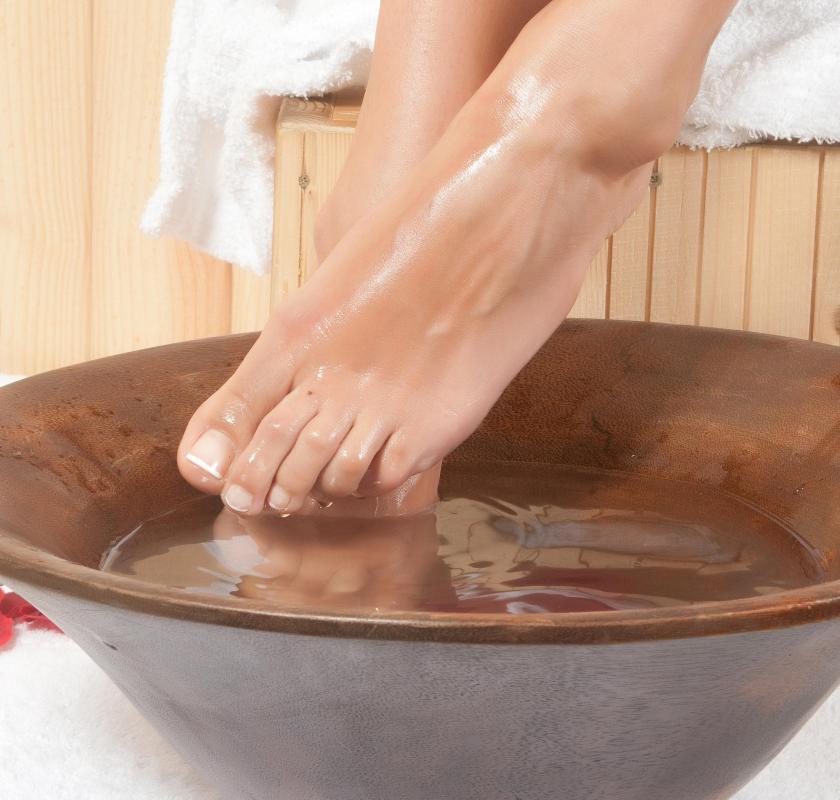At TheHealthBoard, we're committed to delivering accurate, trustworthy information. Our expert-authored content is rigorously fact-checked and sourced from credible authorities. Discover how we uphold the highest standards in providing you with reliable knowledge.
How Do I Treat a Bruised Toe?
Treatment for a bruised toe varies depending on the severity of the injury. Initial home treatment generally involves reducing the swelling on the injured toe. More severe bruises, such as those accompanied by severe pain that does not respond to over-the-counter pain medication, may indicate a more serious injury or condition and must be treated by a doctor.
A bruised toe commonly occurs when a heavy object strikes or crushes the front of the foot, directly on or near the toes. Even when no external cuts form on the skin of the toe, the blow may still damage blood vessels. As a result, these vessels bleed into the skin, causing a contusion — a discoloration commonly known as a bruise.

Resting the injured foot is the first step in treating a bruised toe. The individual should remove the shoe and sock on the injured foot and examine the bruising. If the toe looks straight and no noticeable bumps appear around the site of the bruising, the patient can most likely proceed with home treatment safely.
The injured individual should apply cold to the bruise. He or she can do so by soaking the bruised toe in cold water for up to 20 minutes. Alternatively, ice can be applied to the injury, but an individual should not place the ice directly on the toe. Instead, ice must be applied to the top of the foot so that the blood cools before it reaches the toe. Blood vessels in the toe are too small and may spasm if they get too cold, which actually restricts blood flow and causes more damage.

The patient should apply cold to the injury for the first 48 hours. Doing so helps the body recover from any swelling associated with the injury. After this amount of time passes, he or she should switch to using heat. A heat pack applied to the top of the foot warms the blood as it reaches the injured toe, helping the body to repair the broken blood vessels that caused the bruise.

Additionally, an individual with a bruised toe should keep the injured foot elevated as often as possible over a span of 48 hours. Blood will naturally rush to the site of the injury. While excess blood cells can help the healing process, too many excess blood cells can put additional pressure on the injured area and cause more pain. Elevating the foot reduces the amount of blood rushing to the toe, thereby reducing pain and swelling associated with the bruise.

Pain medication can also help reduce any pain caused by the bruised toe. Acetaminophen typically works best. Aspirin thins the blood, which could cause more blood cells to rush to the site of the injury, making the bruise worse. Ibuprofen does not cause as much bleeding as aspirin, but it does cause more than acetaminophen.
If an individual with a bruised toe experiences intense, unbearable pain, he or she should contact a doctor, especially if the pain does not respond to home treatment. This could indicate a more serious injury. Likewise, if the patient notices any distortions or bumps in the bruised toe, this could indicate a dislocated or fractured bone. These symptoms necessitate a visit to the doctor, as well. Any bruising that gets worse or does not improve after two or three weeks should also be examined and treated by a doctor.
AS FEATURED ON:
AS FEATURED ON:















Discuss this Article
Post your comments